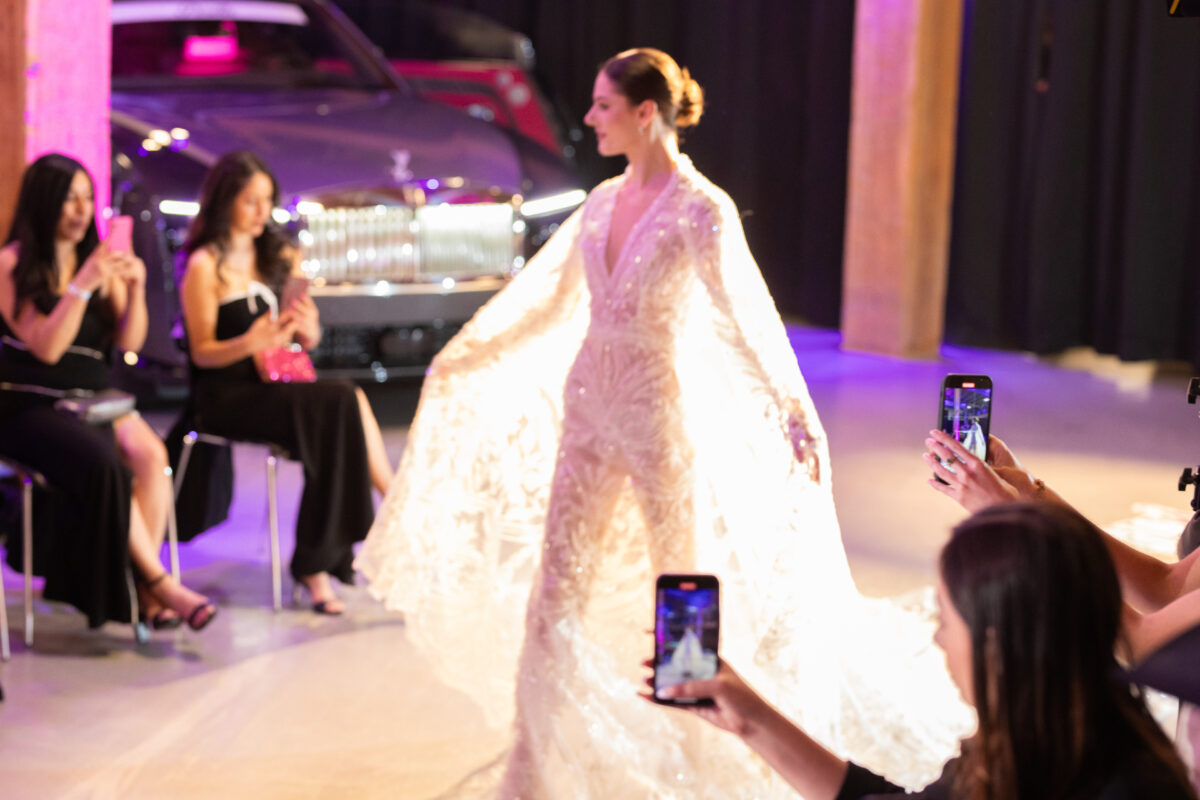The inaugural Chicago Fashion Week (CFW) made a citywide impact with more than fifty events across both the North and South Sides and extending into nearby suburbs. Anchored by three pillars—history, ingenuity and commerce—CFW was designed with a clear purpose: a fashion experience created by and for the people of Chicago.
“It’s not a shopping event. It’s an event to expand people’s perceptions of what fashion in Chicago really represents,” said Carrie Lannon, the event’s producer.
With a program encompassing runway shows, social gatherings, and educational events, CFW’s organizers emphasized showcasing the diversity the city has to offer. Events featured exhibitions from local fashion students, clothing swaps, vintage markets, and runway shows that spotlighted, Black, Asian and Latinx talent.
“I think one of the most important words to us as we’ve developed it—because we got to create this from the ground up—is the word ‘diversity,’” Lannon said. “The cultural and ethnic diversity of Chicago, that’s its strong suit, really.”
And cultural diversity was on full display, not only in the wide range of styles, from streetwear to haute couture, but also in runway shows like Runway LatinX, which celebrated its fifth anniversary during the final weekend of CFW. The show featured talented designers such as Mildre Ramirez from Mexico, Argemiro Sierra from Colombia, and Erick Bendaña from Nicaragua.
“I’m very proud because a lot of the people that are involved or have been involved with me for a long time, many of them are from the South Side,” said Arabel Alva Rosales, producer for Runway LatinX producer and founder of the non-for-profit Pivoting In Heels.
Runway LatinX was held at Cinespace Studios in Pilsen, the neighborhood where Rosales grew up. The night’s theme, “The Shadows in the Light,” encouraged guests to come dressed to shimmer. After the runway show, the event featured pop-up shops that allowed event-goers to shop from the designers and other local brands.
Rosales highlights the significance of bringing runway shows to communities like Pilsen and Little Village, which are home to many Latinx people. She nodded to the quinceañera and bridal shops that line 26th Street. Her own father was a tailor turned designer who operated a storefront in Little Village.
“I think a lot of people don’t know that [Little Village is] the second-highest tax gross area in the city of Chicago,” Rosales said. “There’s so many businesses that are concentrated in that area. And that area also has a lot of fashion.”
Local Latino designers also had the opportunity to present their work at the Chicago Fashion Showcase. Gente Fina, a streetwear brand, draws inspiration from both Chicago and the Mexican state of Durango. Held at Union Station, the showcase was curated to highlight Black, Indigenous, and designers of color. On the runway, Gente Fina models wore shoes from local designer SERES Footwear, founded by Vanessa Arroyo.
“I’m so proud to have been able to play a role in the first Fashion Week here in Chicago,” Arroyo said. “[CFW was] inclusive of everyone involved, and really gave everyone a moment to shine.”
SERES launched a year ago, and earlier this year held a pop-up shop giving customers the opportunity to shop in-person. Arroyo was a finalist for the Rising Star Award presented by the Fashion Group International of Chicago.
“They really gave me the opportunity to share my work, and I walked away meeting a ton of people who didn’t know about the story, and now they do, and they love it. They’re impressed,” Arroyo said.
Arroyo was grateful for the opportunity to connect, network and promote her designs at CFW. She said the fashion industry overall is not welcoming and hard to break into, but CFW reinvigorated her passion.
“This, honestly, just adds momentum to everything, and now I feel like a lot more people know about [SERES], so I really just want to get ready to put our shoes in local stores here in Chicago.”
As CFW comes to a close, many are wondering what next year will bring. Arroyo hopes to be a part of CFW’s continued growth.
“Chicago does have a long way to go, but I was impressed by everything, and it made everyone feel like they could be a part of it. And that isn’t the case in New York,” Arroyo said.
The goal was never to emulate other major fashion capitals, organizers said. Chicago Fashion Week aimed to celebrate, educate, and fully embrace fashion, all while reflecting the city’s rich diversity and commitment to inclusivity.
“When you hear London Fashion Week and Paris Fashion Week, New York Fashion Week, those are different. Those are for buyers and retailers,” Lannon said. “Our schedule on our website makes it very easy for people to understand how they can gain entry to an event that they want to attend.”
With that in mind, CFW is committed to keeping their mission at its core as they plan for next year. Lannon says CFW will also continue to have activation throughout the year.
“Chicago’s known for its architecture, cuisine, theater, art, and so now it’s time for fashion to come to the forefront too,” Lannon said.
Jocelyn Martinez-Rosales is a Mexican American independent journalist from Belmont Cragin who is passionate about covering communities of color with a social justice lens.

